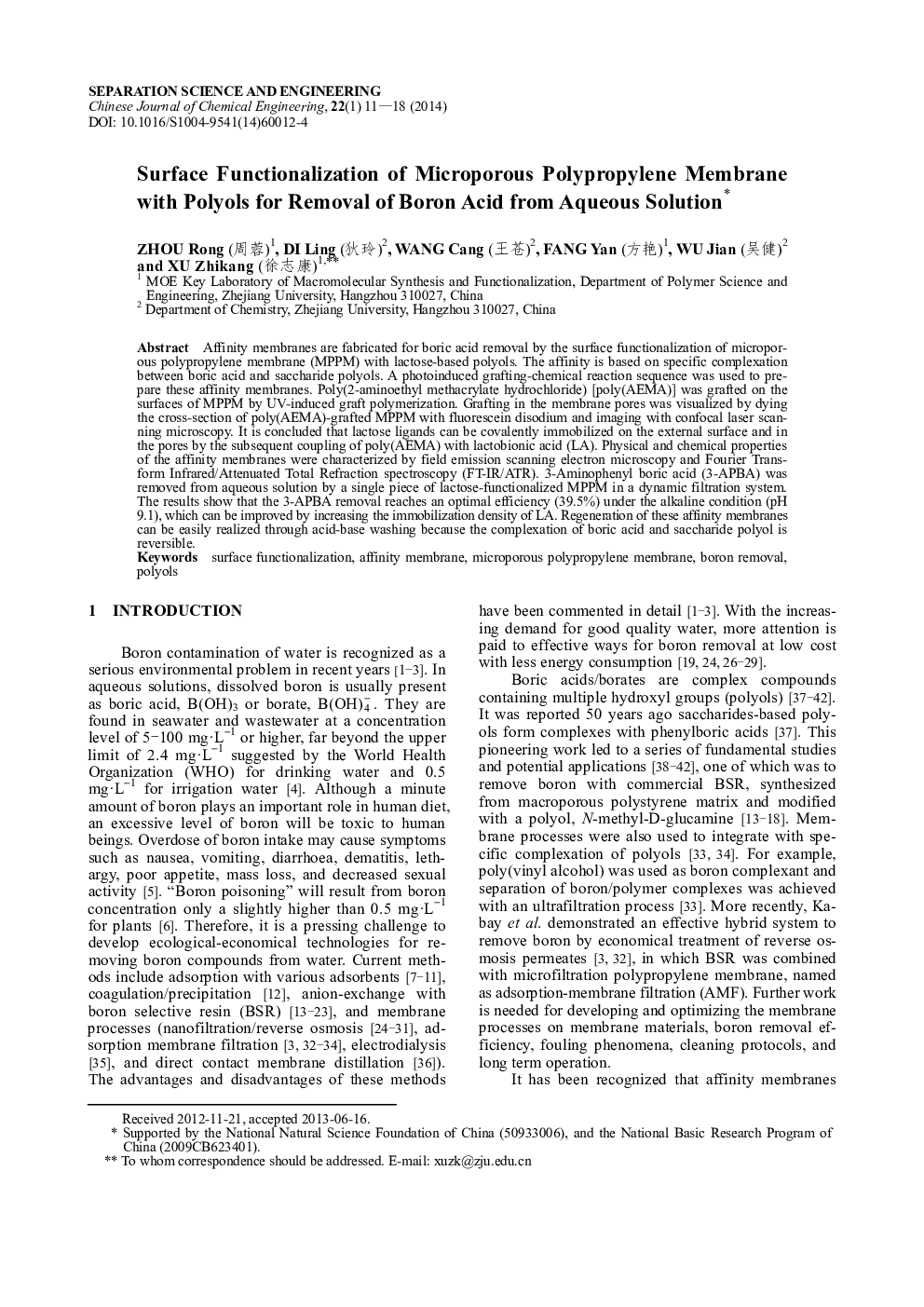| کد مقاله | کد نشریه | سال انتشار | مقاله انگلیسی | نسخه تمام متن |
|---|---|---|---|---|
| 168343 | 1423415 | 2014 | 8 صفحه PDF | دانلود رایگان |
Affinity membranes are fabricated for boric acid removal by the surface functionalization of microporous polypropylene membrane (MPPM) with lactose-based polyols. The affinity is based on specific complexation between boric acid and saccharide polyols. A photoinduced grafting-chemical reaction sequence was used to prepare these affinity membranes. Poly(2-aminoethyl methacrylate hydrochloride) [poly(AEMA)] was grafted on the surfaces of MPPM by UV-induced graft polymerization. Grafting in the membrane pores was visualized by dying the cross-section of poly(AEMA)-grafted MPPM with fluorescein disodium and imaging with confocal laser scanning microscopy. It is concluded that lactose ligands can be covalently immobilized on the external surface and in the pores by the subsequent coupling of poly(AEMA) with lactobionic acid (LA). Physical and chemical properties of the affinity membranes were characterized by field emission scanning electron microscopy and Fourier Transform Infrared/Attenuated Total Refraction spectroscopy (FT-IR/ATR). 3-Aminophenyl boric acid (3-APBA) was removed from aqueous solution by a single piece of lactose-functionalized MPPM in a dynamic filtration system. The results show that the 3-APBA removal reaches an optimal efficiency (39.5%) under the alkaline condition (pH 9.1), which can be improved by increasing the immobilization density of LA. Regeneration of these affinity membranes can be easily realized through acid-base washing because the complexation of boric acid and saccharide polyol is reversible.
Journal: Chinese Journal of Chemical Engineering - Volume 22, Issue 1, January 2014, Pages 11-18
